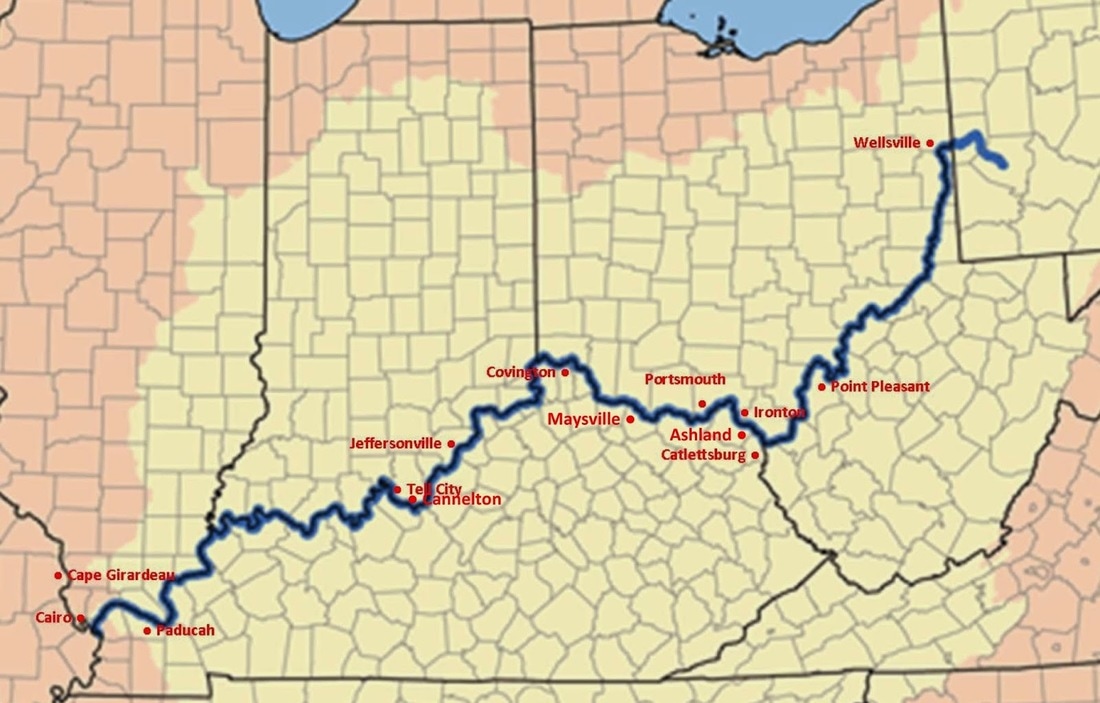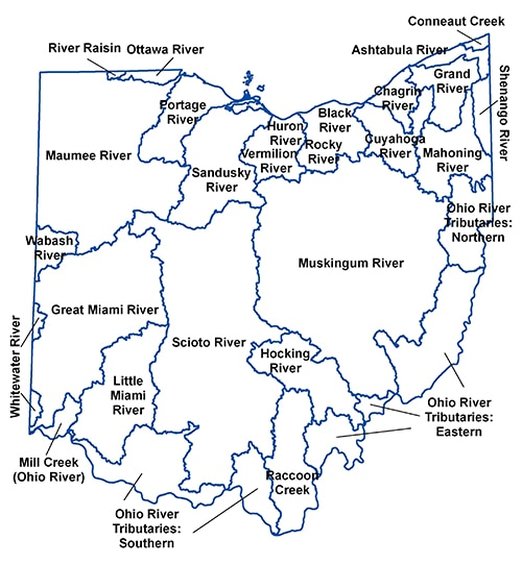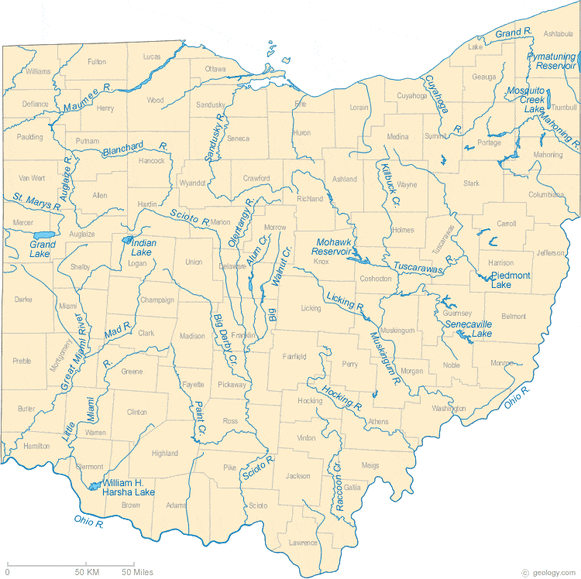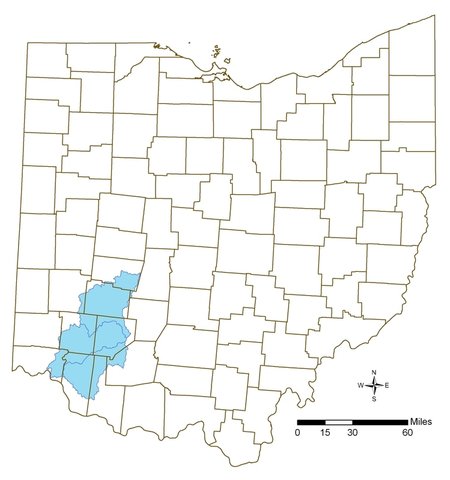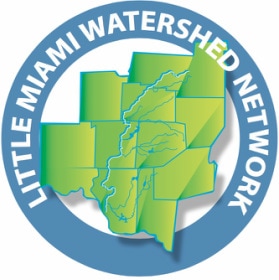|
Communities across the globe are celebrating their rivers today, seeking to educate people about the threats facing our rivers, and learning about better water and energy solutions. Warren SWCD wants to take a moment to recognize the importance of our own local Ohio rivers! Ohio has 254 principal streams and large rivers in Ohio, comprising 5,679 linear stream miles (http://www.epa.ohio.gov/portals/35/tmdl/2012intreport/ir12sectionbfinal.pdf). The Ohio River forms the entire 451-mile southern boundary of Ohio, though the entire river stretches 981 miles from Pittsburgh, PA to Cairo, IL, and touches 6 states. The Environmental Educational Council of Ohio and the Ohio EPA Of Ohio's rivers, 14 have been designated Scenic Rivers. Scenic rivers are classified according to the outstanding qualities a stream possesses. The Scenic Rivers Act provides three categories for river classification: wild, scenic and recreational. Stream length, adjacent forest cover, biological characteristics, water quality, present use, and natural conditions are all evaluated when considering designation. In 1968, Ohio pioneered the river preservation movement with the passage of the nation's first scenic rivers act. A state program was created to protect Ohio's remaining high quality streams for future generations. Scenic rivers retain most of their natural characteristics at a time when many rivers reflect the negative impacts of human activities. Scenic river designation is a cooperative venture among state and local government, citizen groups, and local communities within a watershed. The designation process depends ultimately upon support and protection authority of local governments and citizens. The ODNR studies the proposed river to determine whether it meets the scenic river criteria. All interested parties, including state and local officials, community groups and concerned citizens, meet to discuss the scenic rivers program and to encourage local support for the protection of the river as a natural resource. A legal notice of the intent to designate a river as wild, scenic or recreational is issued by the Director of Ohio DNR 60 days prior to the declaration to allow sufficient time for public comment. Following the public comment period, ODNR responds to public concerns and the Director may declare a river a component of the state scenic rivers system. On April 23, 1969, the Little Miami River which flows through Warren County earned the distinction of becoming Ohio's first designated State Scenic River.
watersheds of warren countyWhat is a watershed? A watershed is the area of land that drains into a lake or stream. Watersheds can be small - like the area that drains into the creek behind your house. Or, watersheds can be large - consider all the land, streams and rivers that drain into the Ohio River or Lake Erie (epa.ohio.gov) Great Miami River watershed (blue); Lower Great Miami River watershed (purple) Little Miami River watershed Love your watershed!Want to help keep the Little Miami River watershed clean and protect surrounding habitat? There are simple steps you can take at home! 1. Use less water Every time you flush your toilet or leave the water running while brushing your teeth, it increases the load on your sewer system. Conserve water. 2. Keep your car repaired When oil leaks from our cars it is eventually sent down storm drains and ends up in the watershed. If your car has sprung an oil leak, get it fixed. Also, be careful while adding oil and make sure any used oil is properly recycled. 3. Use organic gardening techniques Go with natural fertilizers and stick to the directions. Make sure you do not overuse or apply on days when they are likely to be quickly washed away by rain. Just like automotive oil ends up in the watershed, so does a large amount of the fertilizers and pesticides you use in your garden. This causes rivers and lakes to get a huge dose of nitrogen which makes algae grow abnormally. The chemistry of our freshwater lakes and streams gets totally out of whack and fish kills are common, along with a host of other problems. 4. Compost and contain yard wasteToo much organic material clogs streams and when it breaks down, it can upset the water chemistry. Compost yard waste and make sure it’s in bins so it doesn’t wash away during a heavy rain. 5.Deal with household chemicals and medicines properly Check your local environmental health agency or solid waste department for drop-off locations or specially scheduled pickups for toxic household chemicals, like solvents, motor oil and paint. Do not flush unused medicines down the toilet. These are starting to turn up in local drinking water supplies. Find the best way to dispose of them locally. Also, use natural cleaning products around the house. 6. Go sustainable Frequent your local farmer’s market and find organic farmers. Doing business with them helps keep fertilizers and pesticides out of the environment and it also reduces the need to truck food over long distances, which reduces all the pollution associated with transportation. Also, Ohio is a free choice state for energy suppliers so you can buy electricity from sustainable sources and still be serviced by your local utility company. You can research 100% green energy suppliers such as CleanChoice Energy and Star Energy. It will reduce acid rain, which is one of our biggest problems. 7. Don’t litter While one may think we should not have to remind folks not to litter, still some people have not gotten the message. Go to any river or lake popular with fishermen and you will find plastic wrappers from lures and bait at the water’s edge. And, if you litter in your neighborhood, it will make its way to a storm drain and get into our streams, lakes and eventually into the ocean. Finally, why not take it a step further and volunteer for a river or lake cleanup day project? Check out http://www.lmriverkleeners.org/index.html for more information and volunteer opportunities!
1 Comment
|
Details
Author:
|
||||||
|
|
Contact:PHONE: (513) 695 - 1337
EMAIL: [email protected] HOURS: Monday - Friday 7:30am - 4:00pm (except holidays) Connect:Warren County Soil & Water Conservation District Copyright © 2016
Warren SWCD Privacy Notice. Emails are serviced by Constant Contact. Constant Contact's Privacy Notice. |
